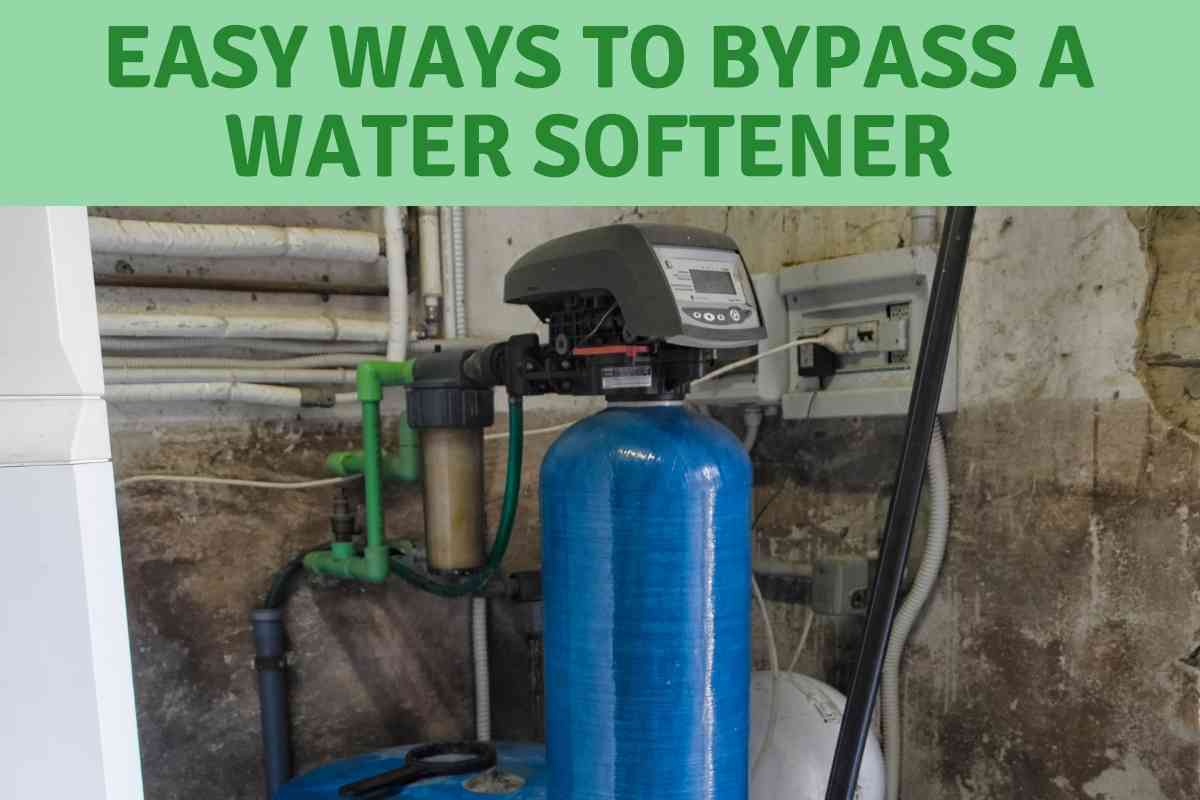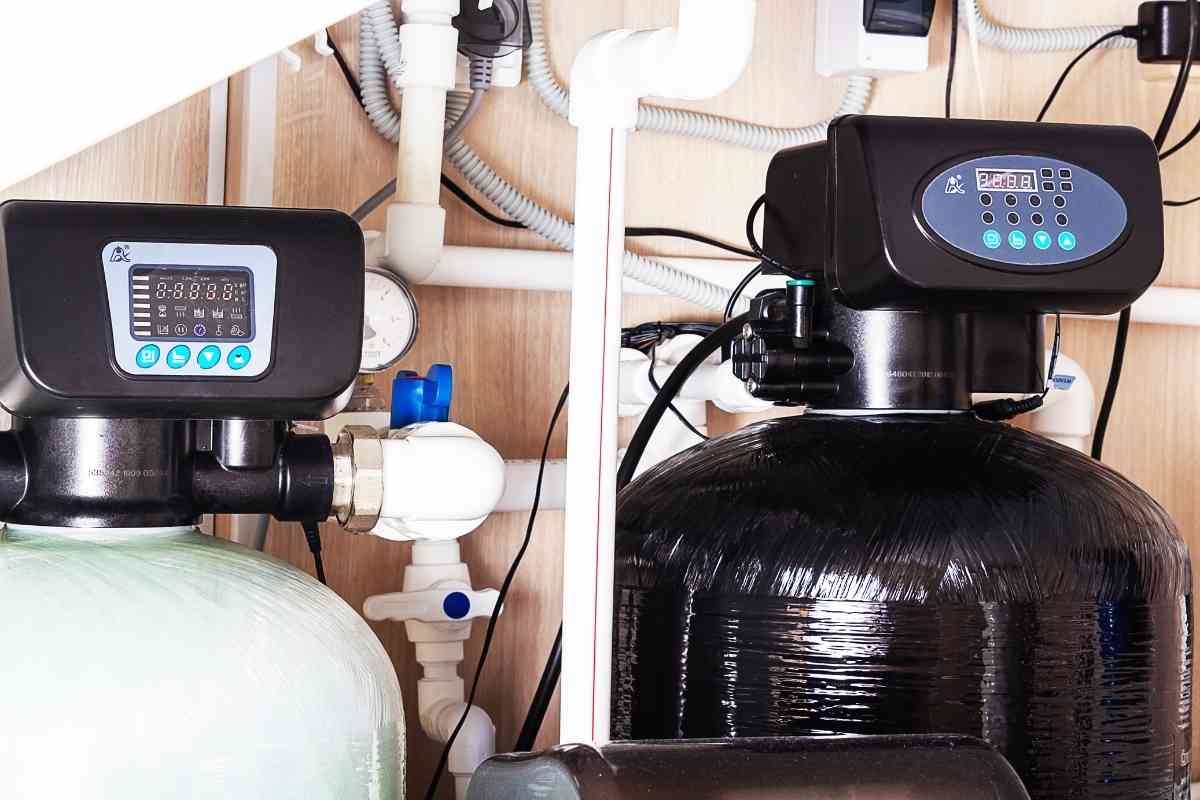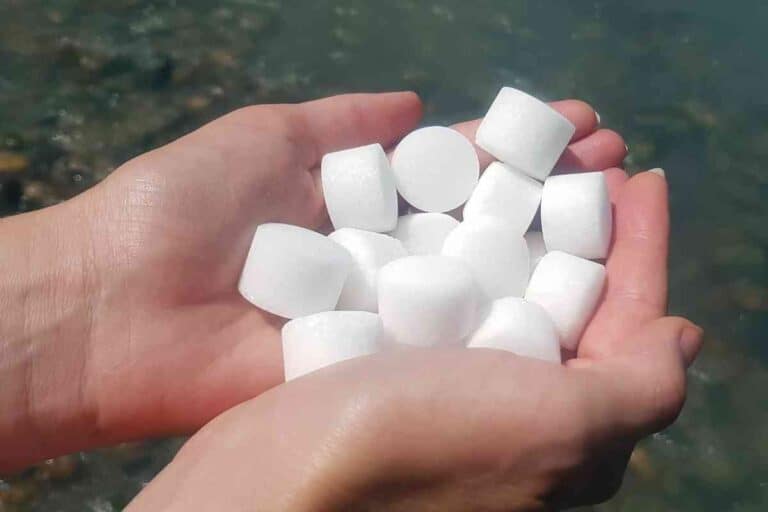Easy Ways To Bypass A Water Softener [Solved!]
If you have a water softener system in your home it is crucial to know how to quickly bypass the water softener system in the event you need to do so immediately.
Knowing how to bypass the water softener not only can help you in the event your system has a leak, but it can also help you if you have no need for soft water at the moment.

Easy Ways To Bypass A Water Softener
To bypass your water softener system quickly, you need to locate the bypass valve, engage it appropriately according to its type, and let the water bypass for the appropriate time. Once you are ready, the valve can be disengaged to allow water to flow back through the system.
Being prepared to bypass the water softener is an important thing to know how to do when you get a new water softener installed. It can help to prevent further damage to the system in the event it needs to be turned off quickly. And it’s important to know how to change your water softener settings before an emergency occurs.
The information in this article has been researched and tested by industry experts and is known to be the quickest and most accurate way to bypass a water softener system quickly.
What Does Bypassing a Water Softener Mean?
When you have a water softener installed, this means that you have hard water in your pipes. You are wanting to filter this water through the water softener in order for soft water to exit the pipes and then come through your faucets.
Many people will use water softeners in a wide variety of homes including cabins, container homes, single-family homes, and mobile homes.
If you need to bypass the water softener, you are wanting water to continue flowing through the pipes, but not go through the water softener.
Instead of it flowing into the water softener and then back out through the pipes, it will just go directly through the pipes as it would if you did not have a water softener.
Why Would You Want to Bypass A Water Softener?
There are a few different reasons why you may choose to bypass your water softener. Since the water softener is going to soften all of the water flowing through your pipes, there may be times when softened water is not needed.
If you are going to be working outside for quite a while, then it might be a good idea to bypass your water softener. This could mean activities such as watering your garden, washing your car, or filling a swimming pool.
There is no reason to have softened water while working outside and it will just wear down your water softener system.
Another reason you may choose to bypass your water softener is if the water softener system is having issues. This could be something electronic or even a leak that is happening. If you bypass the system, you can still get your water, but just let the pipes flow past the water softener without worsening any issues.
Some people will also turn their system on bypass if they are going out of town for an extended period of time.
They do not want water flowing through their water softener if they are not home. This can be extremely beneficial if someone will be coming over to care for the lawn and plants so that way they are not using softened water for lawn care.

How To Bypass A Water Softener
Almost all water softener systems will have some form of bypass valve. There are three main types of bypass valves that typically appear on a water softener.
Usually, your bypass valve will be located close to where the pipes connect to the water softener system.
Turning Bypass Valve
Some units will have one or two valves that require turning in order to engage the bypass. You will need to turn the handle or handles clockwise unless otherwise noted on the handles themselves.
If you have not used the bypass valves before, they may be difficult to turn. Keep turning until they are tight.
Once you no longer need the bypass, you will just need to simply turn the handles the other direction to allow the flow of water back through the water softener.
Button Bypass Valve
Once you have located the bypass button you will need to push it all the way in until it engages. It could potentially be difficult to engage so you may have to push quite hard.
After you are ready to disengage the bypass valve, you will either need to push the button again to pop it back out or you may have to push the button on the opposite side of the valve.
Lever Bypass Valve
A lever bypass valve is one of the simplest to use. You simply just need to turn the valve until it is in the bypass mode.
It could potentially be very stiff to turn if you have not moved it before to the bypass position.
After you have completed the bypass time and want to return water flow through the water softener system, you just need to turn the valve back to the service mode.
Should The System Be On Bypass During Regeneration?
During the regeneration process, the system is automatically put into bypass. This is because during regeneration the system needs to clean the resin beads that trap minerals so it cannot be functioning and regenerating.
Therefore, you do not need to put the system into bypass during regeneration because it will do it automatically.
Some people want to know if they can continue using their water while the system is regenerating. The answer is yes because you will still have water flowing.
However, you will not have soft water flowing so if you are wanting to shower, wash clothes, or wash dishes with soft water, then this is not the time to do so.
This is the perfect time to do any lawn care or outdoor watering as you can use hard water for this. It is best to wait for the regeneration to finish before doing anything that requires soft water. The process should take approximately 1 to 1 ½ hours to complete.
In the event of an emergency and you need water, you will always have water available during a bypass.
What Happens During Regeneration?
If you are wondering why the system must be in bypass during regeneration, it is due to the fact that the system goes through a complex process during this time.
The system has no way of flushing the collected minerals at the same time as softening the water so it therefore has to be in bypass mode in order for this process to be completed.
The resin beads within the water softener system can only trap so many minerals before they stop functioning effectively. At this point, a salt water mixture, also known as brine, needs to be flushed through the system to clean the resin beads.
- Fill- During the fill process, the salt tank will begin to fill with water. Once it fills with water the salt will dissolve in the water, which creates the brine mixture.
- Brine- The brine solution is then sent to the resin tank to begin to clean the resin beads. The brine solution will clean the hardened minerals off of the resin beads.
- Brine Rinse- After the proper amount of brine solution has flowed into the resin tank, then the brine valve will close and no more brine solution will flow through. Water will flow through without the brine solution, which will begin the rinsing process. The minerals that have been removed from the resin beads along with the brine will be flushed down the appropriate drain.
- Backwash- The backwash phase of the regeneration process is when the water flows upwards and through the resin tank. It will travel at a high flow rate in order to flush any remaining sediments from the system.
- Fast Rinse- The final step in the regeneration process is the fast rinse. It is just as it sounds. Water will flowy quickly through the resin tank to flush any remaining brine onto and through the resin beads. Once this final step has been completed, the unit can go back into service mode and begin softening the water again.






